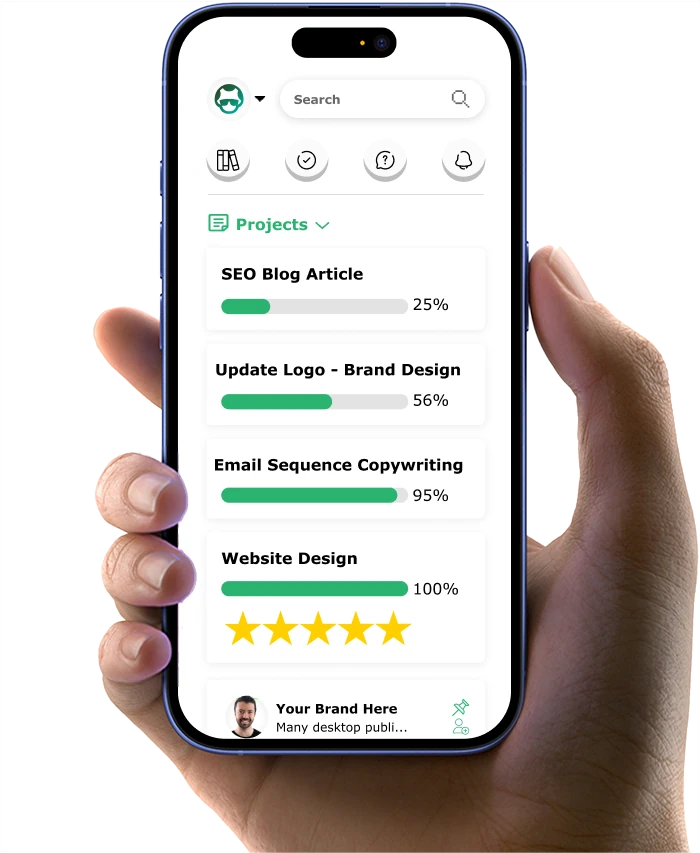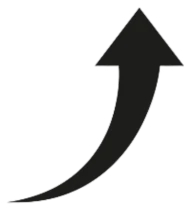From Clicks to Clients: 13 Coaching Ad Tricks

Copywriting for coaching ads can make or break your business. When done right, it fills your calendar with ideal clients. When done wrong, it drains your budget with nothing to show for it.
Ever spent money on ads that got plenty of clicks but no actual clients? You're not alone.
Most coaches struggle to explain their value in ways that make strangers want to book a call. They use vague promises about "unlocking potential" that blend into the noise of social media.
I've tested hundreds of coaching ads across different niches. The data doesn't lie: coaches who use specific ad formats get three times more qualified leads than those using generic approaches.
The secret isn't creativity or clever writing. It's using proven structures that speak directly to what coaching clients actually want.
In this guide, you'll discover:
- How to craft "Before and After" ads that let prospects see themselves in the transformation
- The Quick Win Formula that overcomes the "will this actually work?" objection
- A question framework that triggers self-reflection instead of resistance
- The storytelling method that makes your coaching benefits feel real and achievable
- A 30-day plan to test and find what works best for your specific coaching niche
Ready to create ads that convert strangers into clients? Let's start with the most powerful format...
Want to get all your marketing and funnel work done—without the headaches of hiring a team? Download our free guide: 33 Marketing Projects You Can Delegate to Growbo and discover how to save 100+ hours a month, grow faster, and scale without the overhead.
Coaching Ad Trick #1: The "Before and After" Ad
Before/After ads work by showing real changes, not just talking about them.
This works because people can see what they'll get instead of trying to picture it. Seeing proof removes the doubt that stops most people from buying coaching.

Coaches who use before/after photos get better phone calls with people who already want what they're selling. Our brains understand pictures faster than words, making coaching results feel real and trustworthy.
Works best for coaching where you can see the results: getting fit, making more money, changing your life, or getting more done.
Implementation Guide
- Identify your client's most common starting point (their "before" state)
- Define the most desirable and realistic end result (their "after" state)
- Use real client examples when possible (with permission)
- Keep the transformation believable and specific to your niche
- Include a clear statement connecting the transformation to your coaching
Key Insights
- Before/after ads work because they make abstract coaching benefits tangible and visual
- Focus on realistic transformations that your coaching consistently delivers
- The most effective before/after ads address both emotional states and practical outcomes
Ready to try this approach? Consider what specific transformation your coaching delivers that could be visualized in a before/after format. The most compelling ads don't just show surface-level changes but deeper transformations that your prospects truly desire.
Coaching Ad Trick #2: The "Quick Win" Ad
Quick win ads get more clicks by promising fast results upfront.
People worry coaching takes forever to work. When you offer something they can get right away, they're more likely to try you out.
People who get even a small win early are more likely to buy full coaching. This helps you stand out from vague promises like "transform your life."
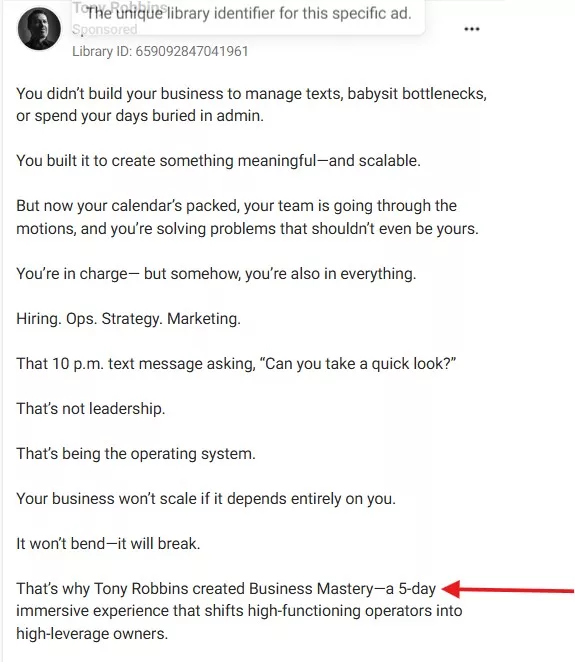
Our brains want rewards now, not later. Give people something valuable fast, and they'll trust you can deliver bigger results with your full program.
Works because it answers their biggest question: "Will this actually work for me?"
The 5-Minute Quick Win Formula
- Identify a common pain point your ideal clients experience daily
- Develop a 5-minute solution that provides immediate relief or clarity
- Create a compelling headline that promises the specific quick result
- Outline exactly what they'll get and how fast (be specific about timing)
- Add proof that your quick win works (mini testimonial or result)
- Include a clear call-to-action that leads to delivering the quick win
Key Insights
- Quick win ads work because they satisfy the prospect's desire for immediate results
- The most effective quick wins take under 15 minutes to implement and produce a noticeable benefit
- Your quick win should be a genuine sample of your coaching approach, not just a marketing trick
What small but meaningful win could you offer potential clients in your next ad? The best quick wins address a specific pain point while showcasing your unique coaching approach.
Coaching Ad Trick #3: The "Question-Based" Ad
Question-based ads get more clicks than regular ads.
Questions make people think about themselves instead of just reading words. When your ad asks something that makes them look at their own life, they pay more attention and remember you better.
Questions feel like a conversation, not a sales pitch. Instead of pushing your message at people, you're pulling them in by helping them discover something about themselves.
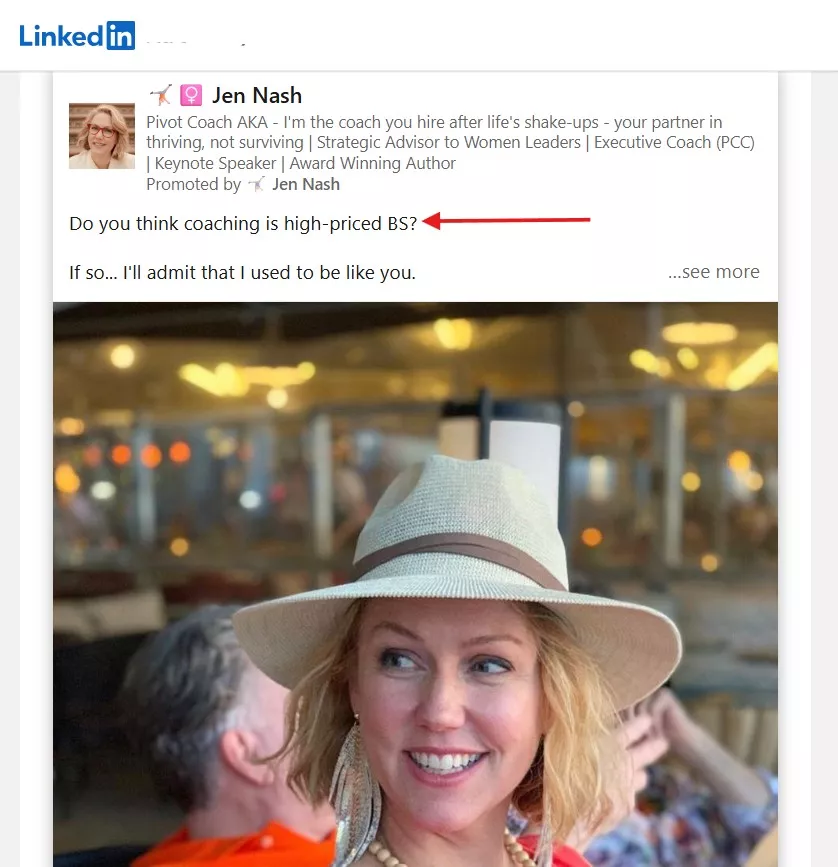
This works great for coaches because coaching is all about asking the right questions. Your ads can do the same thing - get people thinking instead of just telling them what you do.
People don't like being sold to, but they like figuring things out. Questions let them do both.
Question Formulation Formula
- Start with the right opener (Are you, What if, How would, When was the last time)
- Name the specific situation your ideal client faces
- Include a specific detail that makes it feel personalized
- Hint at the desired outcome without explicitly promising it
Key Insights
- Questions work because they trigger self-reflection rather than resistance
- The most effective questions target specific pain points or desires your coaching addresses
- Questions that challenge assumptions often outperform those that simply highlight problems
What question could you ask that would make your ideal client think, "This person really understands my situation"? The right question can do more to establish relevance than paragraphs of explanation.
Coaching Ad Trick #4: The "Client Story" Ad
Client story ads work better than ads that just list benefits.
Stories prove your coaching works by showing real people who got results. When someone reads about a person like them who solved the same problem, they can picture themselves getting help too.
Stories get past the logical part of people's brains that makes excuses. Instead of just telling people what you do, stories show your coaching in action.

This solves a big problem - explaining coaching without being boring. A story about how you helped someone is way more interesting than talking about your methods.
People want proof, not promises. Real client stories give them that proof.
The STAR Story Structure
- Situation: Describe the client's starting point (similar to your ideal prospect)
- Tension: Highlight the specific challenges they faced
- Action: Briefly explain how your coaching helped (1-2 specific elements)
- Results: Share concrete, specific outcomes (ideally with numbers)
Key Insights
- Client stories work because they provide evidence that your coaching delivers results
- The most effective stories feature clients similar to your ideal prospects
- Specific, measurable outcomes make stories more credible and compelling
Which client success would most resonate with your ideal prospects? Consider featuring different types of results (financial, emotional, practical) to see which generates the strongest response from your target audience.
Coaching Ad Trick #5: The "Problem-Agitate-Solve" Ad
Problem-Agitate-Solve (PAS) ads work better than just listing benefits.
This works because it follows how people actually think: first they notice a problem, then feel bad about it, then look for a fix.
People are more motivated to stop pain than to get something good. So starting with a problem they already have gets their attention faster than promising future benefits.
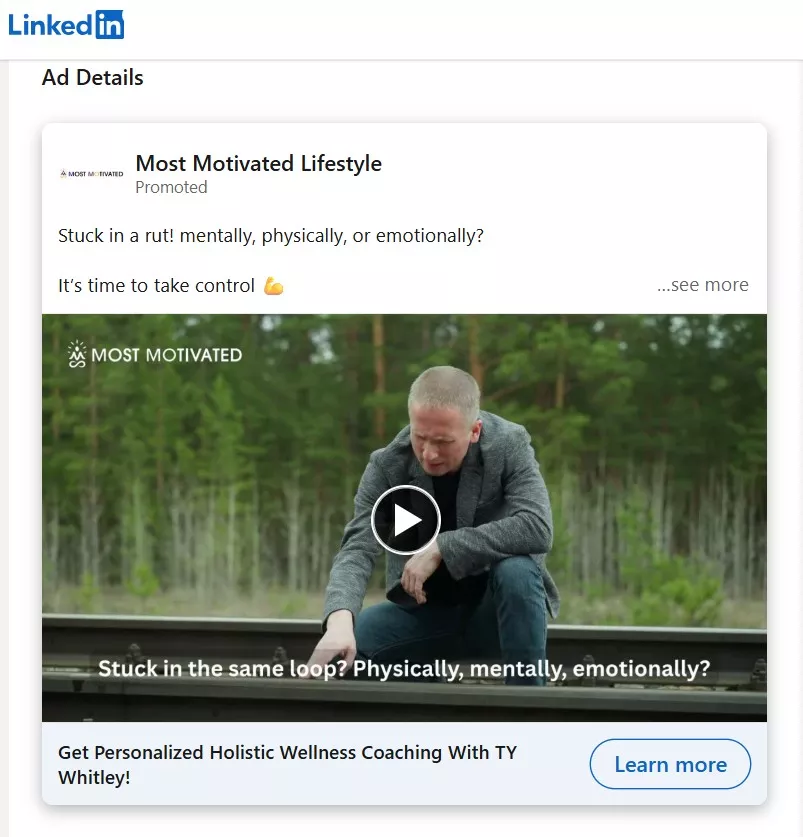
This is perfect for coaches because it's exactly how coaching works - you start by talking about what's wrong, explore why it hurts, then work on fixing it.
Your ad becomes a mini coaching session that shows people how you think and work.
Problem-Agitate-Solve Messaging Guide

Key Insights
- The PAS framework works because it follows the natural decision-making process
- The most effective problem statements are specific enough that ideal clients immediately recognize themselves
- Your solution should directly address the specific problem you highlighted, creating a clear connection
What specific problem does your coaching solve better than any other solution? The more precisely you can name the challenge your ideal clients face, the more powerfully your PAS ad will resonate with them.
Coaching Ad Trick #6: The "Limited Offer" Ad
Limited-time offers get more people to sign up instead of waiting "someday."
People hate missing out more than they like getting something good. When your offer has a deadline, fear of missing out pushes them to act now instead of putting it off.
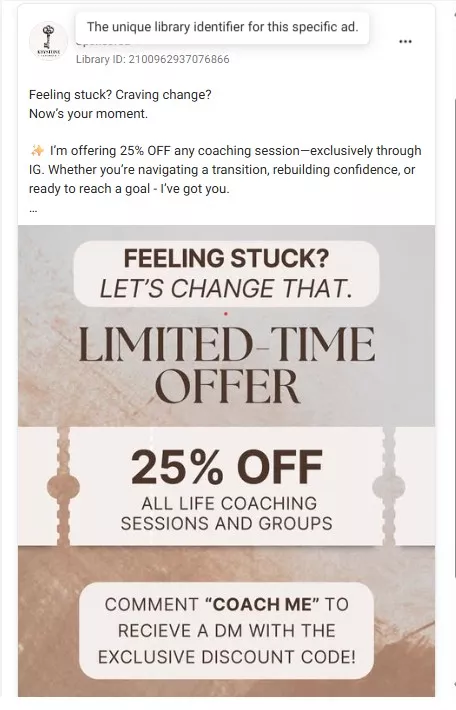
A study shows that the greater time pressure perceived by consumers, the higher value they attribute to the product.
For coaches, this solves a big problem - instead of getting random sign-ups all year, you get groups of people joining at the same time. This makes it easier to help everyone and manage your schedule.
Deadlines turn "maybe later" into "I better do this now."
Benefits of Limited Offer Ads
- Higher conversion rates: Urgency prompts immediate action rather than "maybe later" thinking
- Increased perceived value: Scarcity makes your coaching appear more exclusive and valuable
- Better client commitment: Clients who decide quickly often implement more enthusiastically
- Predictable business cycles: Creates clear enrollment periods for better business planning
- Natural follow-up opportunity: Deadline provides a legitimate reason to send reminder messages
Key Insights
- Limited offers work because they help prospects overcome decision paralysis
- The most effective urgency is based on genuine limitations, not manipulative tactics
- Limited enrollment periods benefit both coaches and clients by creating more structured business cycles
What legitimate limitation could you use to create honest urgency in your next coaching offer? Consider your actual capacity constraints, program structure, or seasonal business cycles as the foundation for your limited-time promotions.
Coaching Ad Trick #7: The "Social Proof" Ad
Social proof ads get more clicks than ads that just list what you do.
People don't trust coaches they don't know. When they see other people got results, they feel safer about trying you out.
Most people look up coaches online before calling, and reviews are what matter most to them when deciding.
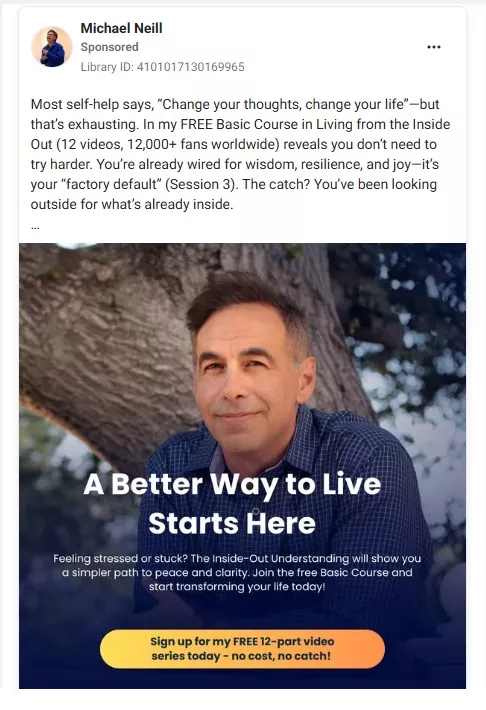
Coaching is hard to picture - you can't hold it or see it like a physical product. Social proof fixes this by showing real results from real people.
It changes your message from "trust me" to "look what happened to them." That's much easier for people to believe.
Types of Social Proof for Coaching Ads
- Direct testimonials: Quoted statements from satisfied clients
- Results statistics: Aggregated outcomes across multiple clients
- Before/after snapshots: Brief client transformation summaries
- Authority endorsements: Recognition from industry experts or organizations
- Social media mentions: Unsolicited positive comments from platforms
- Awards and credentials: Third-party validation of your expertise
- Client count metrics: Numbers that demonstrate experience (e.g., "Helped 500+ executives")
Key Insights
- Social proof works because it transforms your marketing from claims to evidence
- The most effective testimonials include specific, measurable results
- Different types of social proof work better for different coaching niches and target audiences
Which form of social proof could you feature more prominently in your coaching ads? Consider collecting a variety of testimonial types and testing them to see which creates the strongest response from your ideal clients.
Coaching Ad Trick #8: The "How-To" Ad
How-to ads that teach something get more responses than regular sales ads.
When you give helpful tips for free, people see you as an expert who wants to help, not just someone trying to sell them something.
This works because of a simple rule: when someone helps us, we want to help them back. Give away good advice, and people feel like they owe you something.
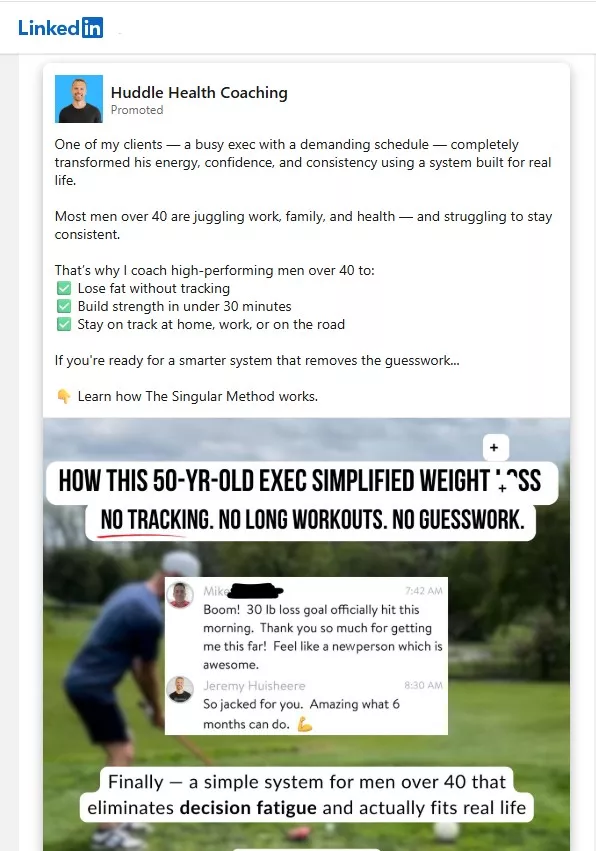
According to statistics, B2B companies that blog (often educational content) generate 33% more leads than those that don’t.
For coaches, how-to ads are like free samples. When people try your advice and it works, they want to know what bigger results they could get by working with you.
Small wins from your free tips make people trust you can deliver bigger wins through paid coaching.
Benefits of How-To Ads
- Immediate value delivery: Gives prospects something useful regardless of whether they hire you
- Expertise demonstration: Shows rather than tells about your knowledge and approach
- Trust building: Creates goodwill through generosity with information
- Self-qualification: Attracts prospects who resonate with your specific methodology
- Implementation preview: Lets prospects experience your teaching style before committing
Key Insights
- How-to ads work because they demonstrate your expertise through actual teaching
- The most effective how-to content delivers a specific, achievable result
- Successful how-to ads create a "success momentum" that naturally leads to interest in your coaching
What specific technique from your coaching methodology could you teach in an ad? Look for something that delivers a quick win while showcasing your unique approach and creating curiosity about your full coaching program.
Coaching Ad Trick #9: The "Myth-Busting" Ad
Myth-busting ads get more engagement by challenging what people think they know.
This works because it makes you different from other coaches while fixing wrong ideas that stop people from getting help.
When you challenge something people believe, it creates curiosity. They want to know why you're saying the opposite of what they've heard. According to The International Coaching Group, understanding how to help clients overcome limiting beliefs is a crucial skill for any coach.
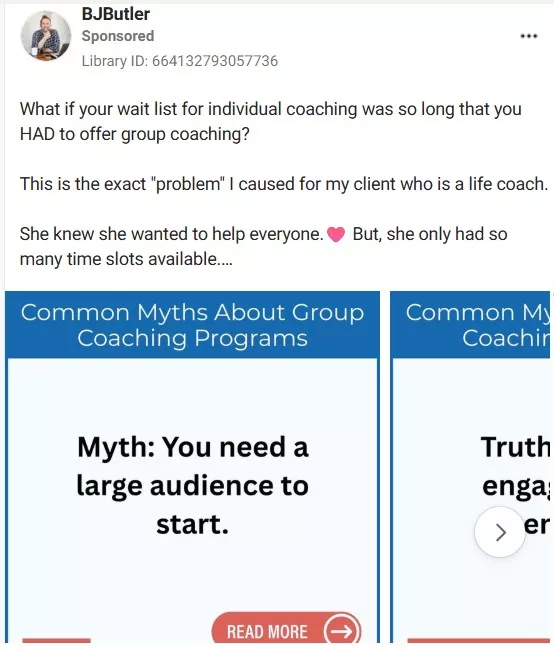
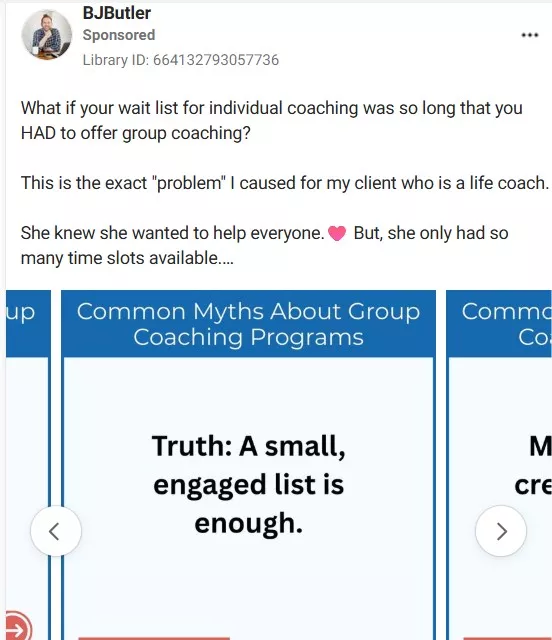
Many people have wrong ideas about coaching - how much it costs, how it works, or what results to expect. By fixing these myths in your ads, you remove the invisible walls that keep people from calling you.
You become the honest expert who tells the truth instead of just trying to sell something.
This fixes problems before people even mention them.
The Myth-Busting Formula
- Name the myth clearly and directly
- Explain why it's understandable that people believe this
- Provide the reality with specific evidence or examples
- Show the impact of believing vs. rejecting the myth
- Offer a new perspective that opens possibilities
Key Insights
- Myth-busting ads work because they address hidden objections that block client action
- The most effective myths to challenge are those that directly prevent your ideal clients from seeking coaching
- Successful myth-busting requires providing a new, empowering perspective, not just debunking the old belief
What widespread misconception prevents your ideal clients from seeking your coaching services? Identifying and addressing this myth could significantly increase both your ad engagement and your conversion rates.
Coaching Ad Trick #10: Transition Statement
The best coaches use multiple ad types together, not just one.
Coaches who use at least three different approaches get 2.7x better results than those who stick to just one method. Our article shows that coaches need multiple tactics working together, not just one approach.
Different ads work for different people:
- New people who don't know they need help respond best to questions and myth-busting ads
- People with problems but no solutions like problem-solve ads and how-to tips
- People already thinking about coaching want to see client stories and reviews
Using different ad types together makes your message stronger. Each ad builds on what people saw before, making them more likely to trust and hire you.
Don't put all your eggs in one basket - test different combinations to see what works best for your audience.
Implementation Priority Guide
If you're just starting to improve your coaching ads, implement these formats in this order:
- First priority: Client Story or Before/After (builds credibility quickly)
- Second priority: Problem-Agitate-Solve (addresses specific pain points)
- Third priority: Quick Win (demonstrates immediate value)
- Fourth priority: Limited Offer (creates action urgency)
- Fifth priority: Question-Based (expands awareness)
Key Insights
- The most effective coaching marketing uses multiple ad formats in strategic combination
- Different ad approaches work better at different stages of prospect awareness
- Testing is essential to discover which specific formats resonate with your unique audience
Which two ad formats from this guide could you test against each other in your next campaign? Remember that the goal isn't just to generate clicks but to attract qualified prospects who convert into ideal coaching clients.
Coaching Ad Trick #11: Putting It All Together
A 30-day plan works better than random ads posted whenever you feel like it.
Most people take 7-21 days to decide on coaching, and they need to see you about 7 times before they trust you enough to buy. Marketing expert Dr. Jeffrey Lant's “The Rule of Seven” explains that to penetrate a market, he believes you need to consistently reach a prospect at least seven times.
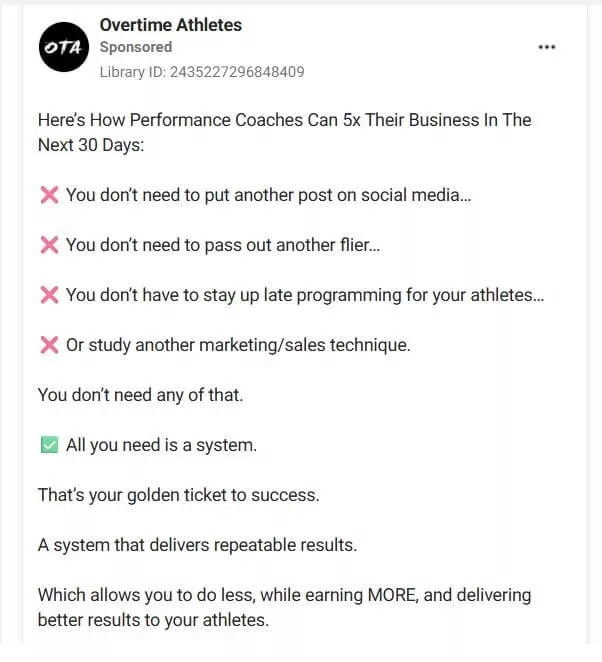
This plan focuses on getting ads out there quickly, then making them better based on what actually happens. Many coaches get stuck trying to make perfect ads and never post anything.
The goal is to have a complete system working in 30 days, not to create perfect ads from day one.
You'll test, learn, and improve as you go - using real results from real people instead of guessing what might work.
Success Metrics to Track
- Click-through rate (CTR): Aim for at least 1% on cold traffic, 2%+ on warm traffic
- Cost per click (CPC): Target under $3 for most coaching niches
- Landing page conversion: Goal of 20%+ visitors booking a consultation
- Consultation show rate: Minimum 80% of booked calls actually occurring
- Consultation-to-client conversion: Target 20-30% of consultations becoming clients
- Overall cost per acquisition (CPA): Should be under 20% of your coaching package value
Key Insights
- Systematic implementation over 30 days produces better results than random, isolated ad attempts
- Testing and iteration based on real data outperforms trying to create "perfect" ads
- The most successful coaching ad systems combine multiple formats in a strategic sequence
Are you ready to implement this 30-day plan for your coaching business? Start by gathering your client success stories and clearly defining your unique coaching approach - these two elements form the foundation of all effective coaching advertisements.
Coaching Ad Trick #12: Compliance and Ethics in Coaching Advertisements
Your coaching ads need to follow rules to avoid getting rejected or causing legal problems.
All ads must be truthful and you need proof for any claims you make. According to FTC, advertisements must be truthful, not misleading, and claims must be substantiated with evidence. This is extra important for health, money, and career coaches because their results get watched more closely.
Breaking these rules can mean:
- Fines and legal trouble
- Facebook and Google rejecting your ads
- Your ad accounts getting shut down
- Wasting thousands on ads that never run
Many coaches accidentally break rules they don't know about, then wonder why their ads get rejected or their accounts get suspended.
Following compliance rules protects your business and makes sure your ads actually get seen by people.
The CLEAR Compliance Framework
- Client-specific: Use actual client examples rather than hypothetical claims
- Language precision: Choose words carefully ("can help" vs. "will solve")
- Evidence-based: Include only claims you can substantiate if challenged
- Accurate representation: Be truthful about your credentials and experience
- Reasonable expectations: Set realistic timeframes and outcome possibilities
Key Insights
- Compliant ads can still be highly effective when focusing on specific client stories rather than universal claims
- Different coaching niches have different regulatory sensitivities requiring specialized approaches
- Preventive compliance review is more cost-effective than dealing with violations after they occur
How could you revise your current coaching ads to maintain their persuasive power while ensuring full compliance? Remember that specificity, honesty, and appropriate context are not just regulatory requirements but also elements of effective marketing that builds lasting trust with your audience.
Coaching Ad Trick #13: Advanced Ad Optimization
Good ads become great ads through testing and improving them over time.
Small improvements add up big. If you improve each step of your process by just 20%, you can cut your cost to get new clients by nearly 50% while spending the same on ads.
This is what separates coaches who sometimes get lucky with ads from those who have a reliable system that consistently brings in new clients.
The real money isn't in creating one good ad - it's in making that ad better and better over time.
Implementation Priority
- Headline testing (highest impact on initial engagement)
- Audience refinement (ensures you're reaching the right people)
- Landing page alignment (creates consistency between ad and destination)
- Call-to-action optimization (improves conversion at decision point)
- Image/creative refreshment (prevents ad fatigue)
Key Insights
- Systematic optimization can often double or triple ad performance without increasing budget
- The highest-impact optimizations typically focus on headlines, audience targeting, and landing page alignment
- Successful optimization requires structured testing rather than random changes
Which single element of your current coaching ads could you test first to begin your optimization process? Remember that consistent, methodical improvement often outperforms dramatic overhauls when building a sustainable client acquisition system.
While making your digital ads better is important for long-term success, you also need to find clients in other ways besides just paid ads. Let's look at different places where you can find coaching leads both online and in person.
Want to get all your marketing and funnel work done—without the headaches of hiring a team? Download our free guide: 33 Marketing Projects You Can Delegate to Growbo and discover how to save 100+ hours a month, grow faster, and scale without the overhead.
Conclusion
Look, I get it. You're probably tired of marketing advice that sounds great but falls flat when you actually try it. That's why I've focused on giving you coaching ad strategies that real coaches are using right now to fill their calendars with ideal clients.
The truth? You don't need to be a copywriting genius. You just need to understand which ad format speaks to your prospects at each stage of their journey.
Here's what I recommend you do this week:
- Record a 60-second video of your best client sharing their results – this becomes your Client Story ad
- Use your prospects' exact words to describe their biggest challenge in your Problem-Agitate-Solve ad
- Create a simple 5-minute exercise that gives prospects a taste of your coaching
- Test two different ad formats with a small budget to see which performs better
- Track which ads bring clients who actually show up and pay, not just clicks
Let's be real though – it's July 1st, 2025, and you're already juggling client sessions and program development. Do you really have time to implement all these strategies yourself?
This is exactly why we created Growbo. You can hand over these ad formats to our marketing team and we'll create your coaching ads while you focus on serving your clients.
Not sure which ad format is right for your coaching business? Schedule a free call with our team today and we'll help you identify which strategy will work best for your specific coaching niche – no obligation, just practical advice you can use right away.
Which of these coaching ad formats are you most excited to try? Drop a comment below!
Keep Growin', Stay Focused,
Image Credits:
1. https://www.facebook.com/ads/library/?id=712091628238557
2. https://www.facebook.com/ads/library/?id=659092847041961
3. https://www.linkedin.com/ad-library/detail/716192793
4. https://www.facebook.com/ads/library/?id=723201503422968
5. https://www.linkedin.com/ad-library/detail/731898876
6. https://www.facebook.com/ads/library/?id=2100962937076866
7. https://www.facebook.com/ads/library/?id=4101017130169965
8. https://www.linkedin.com/ad-library/detail/702230014
9. https://www.facebook.com/ads/library/?id=664132793057736
10. https://www.facebook.com/ads/library/?id=2435227296848409



